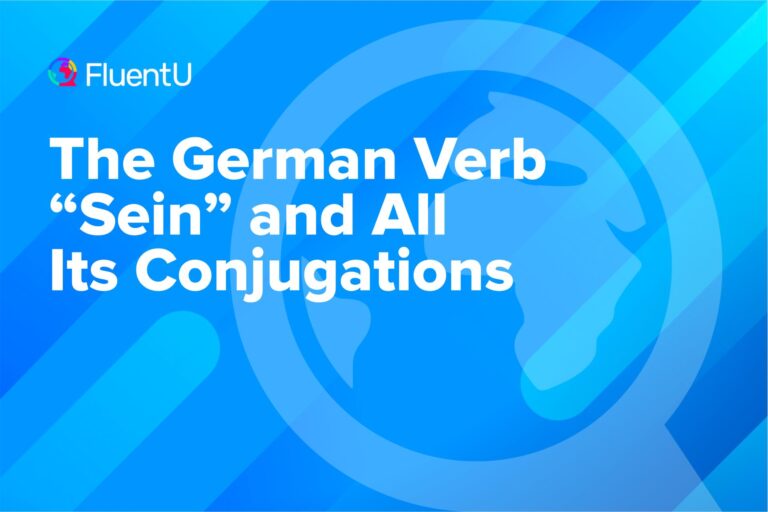Accents in German: 7 German Dialects from Around the World
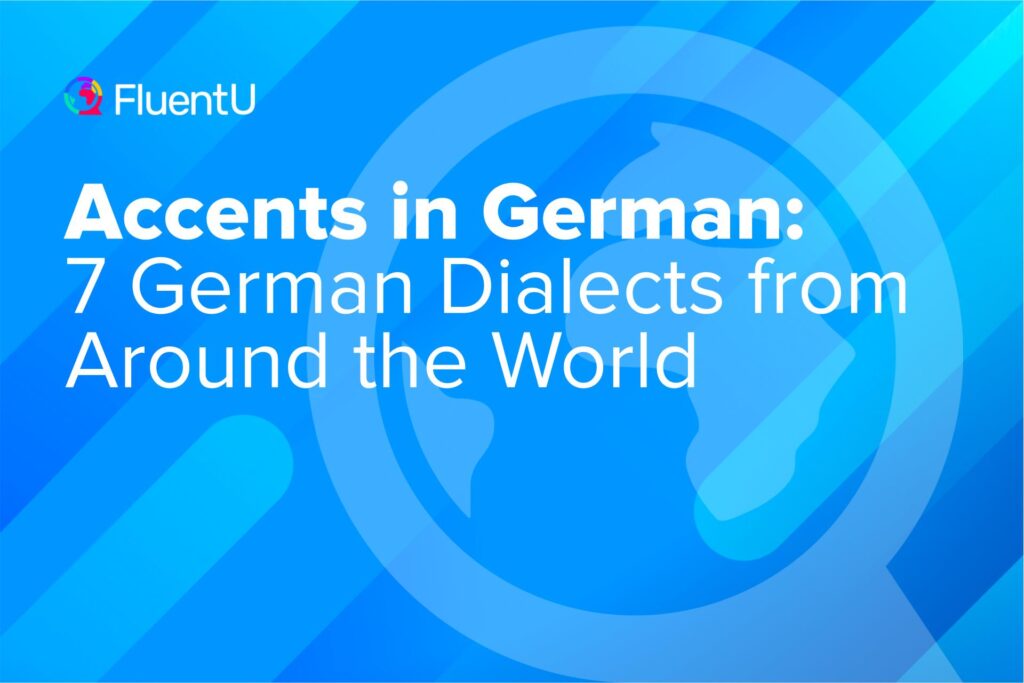
When I started learning German, people offered a million reasons why I shouldn’t, one of them being this misconception: “German people all speak different dialects anyway.”
German, as the myth goes, is a fractured collection of independent mini-languages. Move from city to city, and you won’t understand a word. Let’s put that myth to rest and tell the other half of the story.
Download: This blog post is available as a convenient and portable PDF that you can take anywhere. Click here to get a copy. (Download)
What Is a Dialect?
As the old saying goes, “A language is a dialect with an army and a navy.”
In other words, the division between “language” and “dialect” is often political.
Why do we consider Portuguese and Spanish to be two separate languages when they have so many strong similarities? Why do we consider Cantonese and Mandarin to be two dialects of Chinese, even though they can be very different? Pull up a map, look at some national borders and then get back to me.
To refute a stereotype, a dialect is not just a messed-up version of a “true” or “proper” language. Sometimes one dialect sets the norms within a community of speakers, but that doesn’t mean that other dialects are aberrations without any rules of their own. People just speak differently, and that’s okay.
What is the Standard German Accent?
Even though there are a lot of dialects of German, there is a dominant, norm-setting variety that almost all non-native speakers learn. It is called Standarddeutsch (Standard German) or often Hochdeutsch (High German).
That’s because Standarddeutsch exists in every German-speaking country. Germany, Austria and Switzerland each have their own version of Standarddeutsch, but most non-native speakers learn it from Germany because it’s the largest country in the trio.
By knowing this variety of German, you’ll be able to communicate throughout the entire German-speaking world. If you study abroad in Germany, it will be the language of your classes. Even Germans who grow up speaking a non-standard dialect at home will still usually be masters of Standard German because they are exposed to it throughout their lives.
So aside from Standarddeutsch, what other different types of German are there?
You probably want to check out other kinds of German to find out if you understand them. Some will have mutual intelligibility with the Standarddeutch you’ve been learning. Others, perhaps not.
We’ll focus on seven kinds.
7 Examples of German Accents and Dialects
Swiss German (Schwiizerdütsch)
For kicks, let’s start with the German variety you’re least likely to understand. Schwiizerdütsch, also spelled Schweizerdeutsch or even Schwizertitsch, is the catch-all term for the different varieties in the German-speaking cantons of Switzerland.
So yes, they do vary from place to place even in this small country. However, they share some common trends—such as vowel shifts—compared to Standarddeutsch, which can affect even how the Swiss say the articles (words meaning “the” or “a”). See how many differences you can recognize just in this one sample of animal names.
Swiss German is mainly a spoken variety of the German language, and it brings its own gang of false friends: for example, laufen means “running” in Standard German but “walking” in Swiss.
Austrian German (Österreichisches Deutsch)
As noted before, there is an Austrian Standard German which is very, very similar to the German Standard German you’re learning. If you see Austrian German in writing, such as in the newspapers Die Presse or Der Standard, you might not notice any differences at all!
But again, spoken language is different. You’ll immediately notice some pronunciation differences in the Standarddeutsch of this YouTuber, and when she switches out of the standard, you might even feel a little lost!
It has a lot of unique words (Faschiertes, Marillen, heuer etc.), and quite a few false friends for speakers of Standard German.
Here are a few examples:
- Kasten means “a chest” in Standard German but “a wardrobe” in Austrian.
- Palatschinken sounds like ham (Schinken) to Standard German speakers but actually describes pancakes in Austria, with or without ham.
- Germans drive (fahren) cars while Austrians steer (lenken) them.
- When Germans want to sit comfortably they take a Sessel (armchair), but an Austrian Sessel is any old chair.
The Bavarian Dialect (Bayerisch)
We’ll continue our sweep of southern High German by looking at the Bavarian dialect next. Bavaria is in southeastern Germany, and it is the largest of the 16 Bundesländer (roughly equivalent to states or provinces) that make up the country.
Why have I called it High German? “High” in this sense has nothing to do with high prestige or a high level of formality. It’s geographical—Bavaria is near the Alps, and mountains are high ground.
Bavarian German shares similarities with the other varieties I’ve just described, but it often confuses Germans from other parts of the country.
This Bavarian ska band almost became Germany’s entry in the Eurovision Song Contest in 2013. Despite being a fan favorite, the song’s hard-to-comprehend lyrics may have been the reason for its defeat. How much do you understand?
The Upper Saxon Dialect (Sächsisch)
Saxony, or Sachsen, is another one of the 16 Bundesländer. It is in the eastern half of the country and was part of the former German Democratic Republic during the Cold War.
Germany may be reunited now, but this dialect still provokes some strong and divisive opinions. It’s considered by many to be the “ugliest” German variety.
Markers of this dialect include a different pronunciation of the “ei” vowel sounds, so that they sound less like English “hi” and more like English “hay.” Some “R” sounds also take on a different quality. For example, instead of counting with “eins, zwei, drei, vier,” you’d say “eens, zwee, drei, vieor” in Sächsisch.
The Berlin Dialect (Berlinerisch)
Some say that Berlinerisch is dying due to the mass media influence of Standarddeutsch, decades of division and the shrinking number of Berliners who have lived in the city their whole lives.
The dialect is known for replacing its “ch” sounds with “k,” softening hard “g” into “j,” and blurring the lines between the accusative and dative cases.
See if you can hear these differences in this lively rant.
Low German (Plattdüütsch)
“Low” in this case just means the lowlands of northern Germany, in contrast to the highlands of the Alps. Although this dialect is also slowly fading away, many speakers still see it as a part of their proud heritage, even going so far as to consider it its own language rather than a dialect.
Efforts are underway to protect Plattdeutsch, including the dialect short film festival that gives us this clip.
Pennsylvania “Dutch” (Pennsilfaanisch Deitsch)
But not all German is spoken in Europe! Pennsylvania “Dutch” is really a misinterpretation of the word Deutsch. It is a variety of German that has been passed down within some communities in North America, usually among the descendants of 17th and 18th-century Amish and Mennonite settlers.
It has its origins in the Palatinate region of Germany and still has similarities to the modern Pfälzisch dialect. One feature that sets it apart is frequent code-switching or borrowing of English words in some speaker communities, as you can hear in this man’s story of growing up with the language.
How Many German Dialects Are There?
From Plattdeutsch to Palatinate, Franconian to Frisian, Saxon to Swabian and Bavarian to Berlinerisch, from Hessian to Westphalian and from Austrian (which in itself has different variants, for example, Viennese, Austro-Bavarian or Tyrolese) to Swiss German: the number of accents, dialects and German varieties is seemingly endless.
There are estimated to be around 250 German dialects.
All German accents and dialects stem from the language spoken by various Germanic tribes, but they have taken different paths over the last centuries and millennia.
For example, consider the Weißwurstäquator (“White Sausage Equator”) dividing Upper German from Central German dialects, or the “Benrath Line” dividing between accents with different consonants—aka maken (with a /k/ sound) versus machen (with an /x/ sound).
Not to mention dead dialects like Pomeranian or Silesian, non-European variants like Amana or Texas German or closely related West Germanic languages such as Dutch, Afrikaans and Yiddish.
So Which German Should I Learn?
The above list is an incomplete sample of all the types of German that exist.
The good news, however, is that the Standarddeutsch you’re learning is pretty much all you need. Remember, most speakers of these non-standard dialects know the standard too, so you will be able to communicate.
You’ll find that a lot of German media are in Standarddeutsch. In fact, you can even take advantage of this to learn German—for instance, FluentU’s German program teaches Standarddeutsch.
FluentU is one of the best websites and apps for learning German the way native speakers really use it. FluentU takes real-world videos—like music videos, movie trailers, news and inspiring talks—and turns them into personalized language learning lessons.
Watch authentic media to simultaneously immerse yourself in the German language and build an understanding of the German culture.
By using real-life videos, the content is kept fresh and current. Topics cover a lot of ground as you can see here:
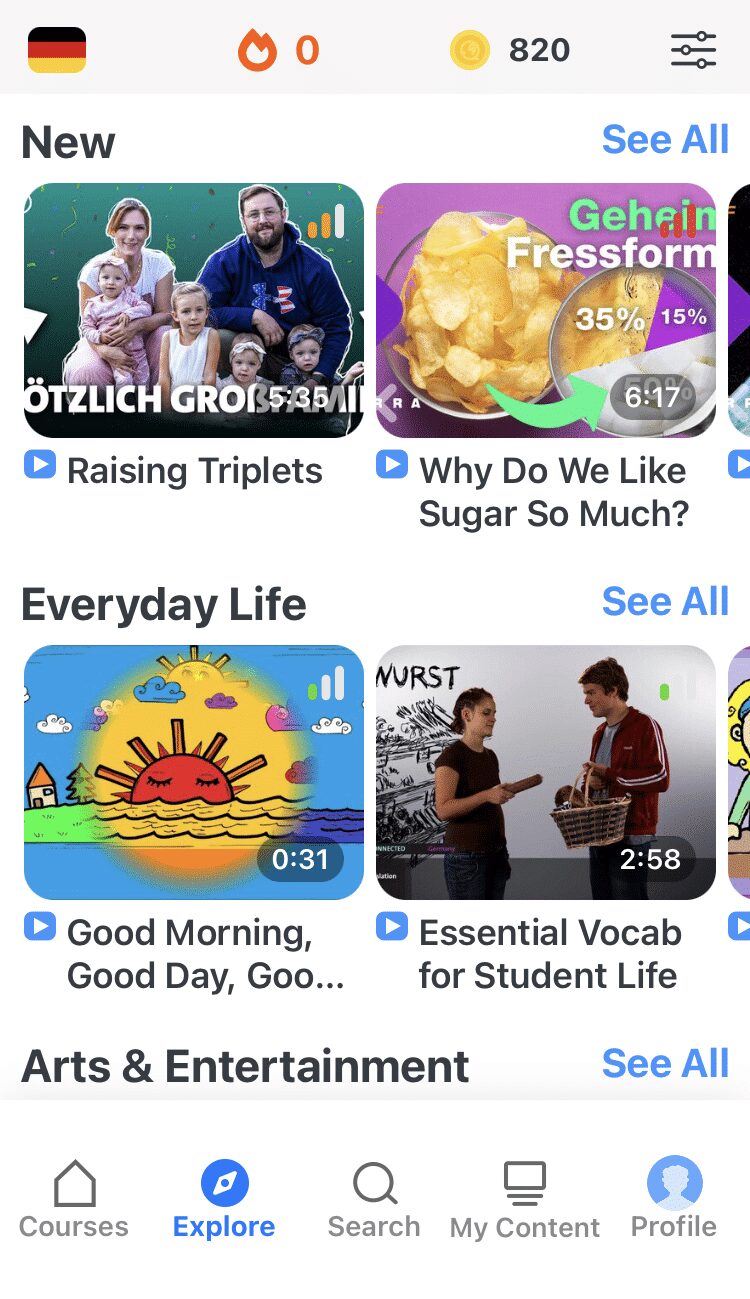
Vocabulary and phrases are learned with the help of interactive subtitles and full transcripts.
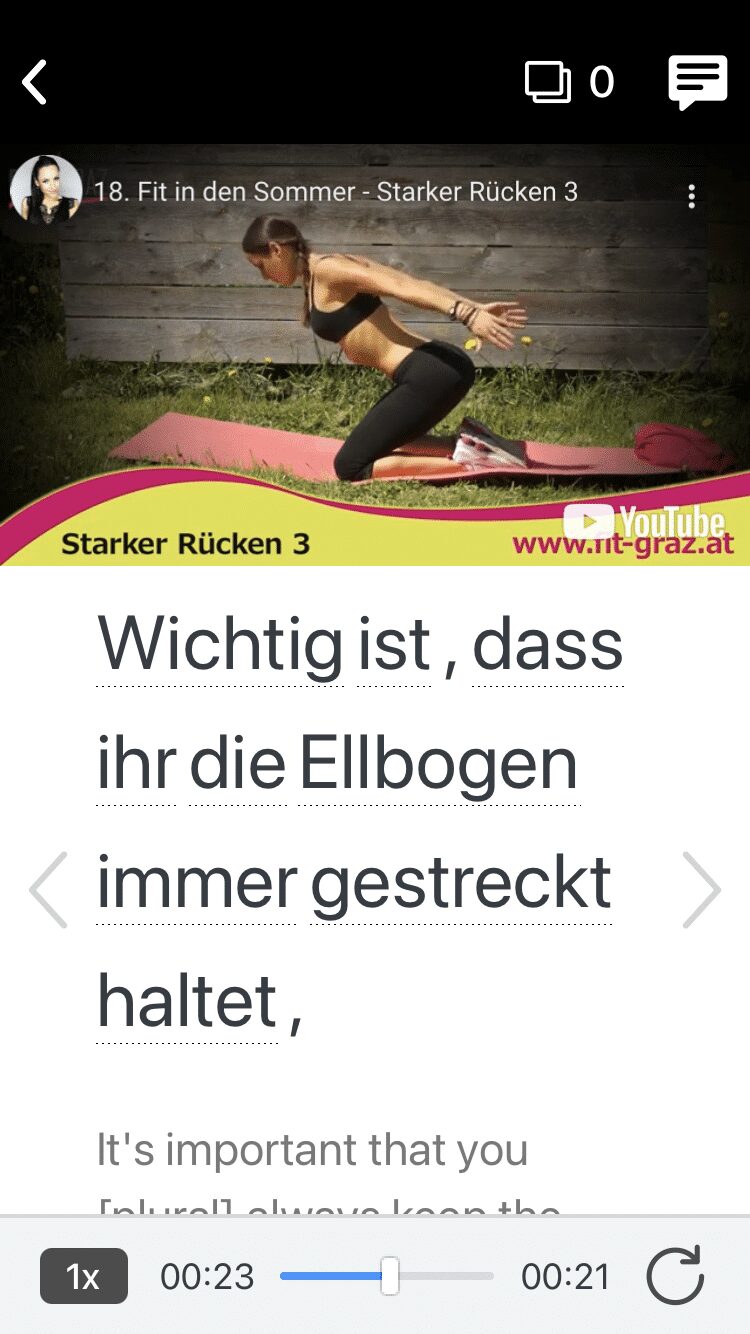
Hovering over or tapping on any word in the subtitles will automatically pause the video and instantly display its meaning. Interesting words you don’t know yet can be added to a to-learn list for later.
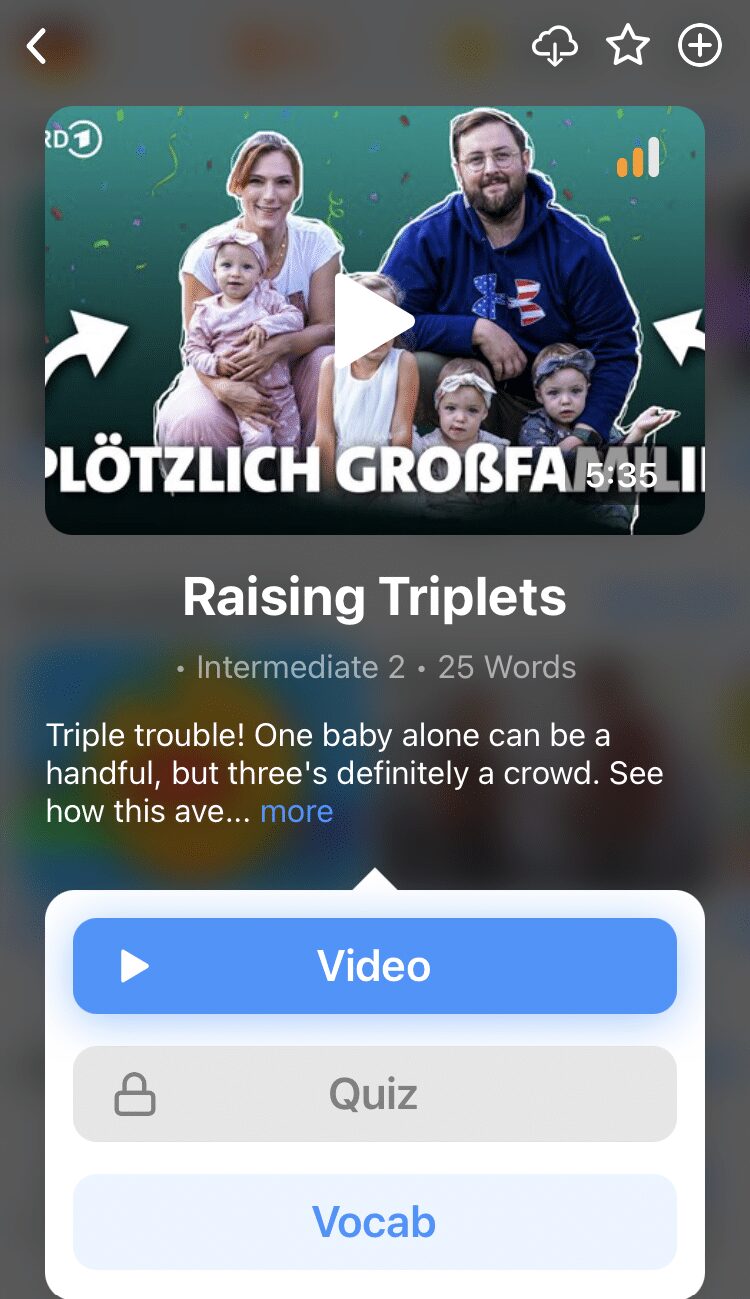
For every lesson, a list of vocabulary is provided for easy reference and bolstered with plenty of examples of how each word is used in a sentence.
Your existing knowledge is tested with the help of adaptive quizzes in which words are learned in context.
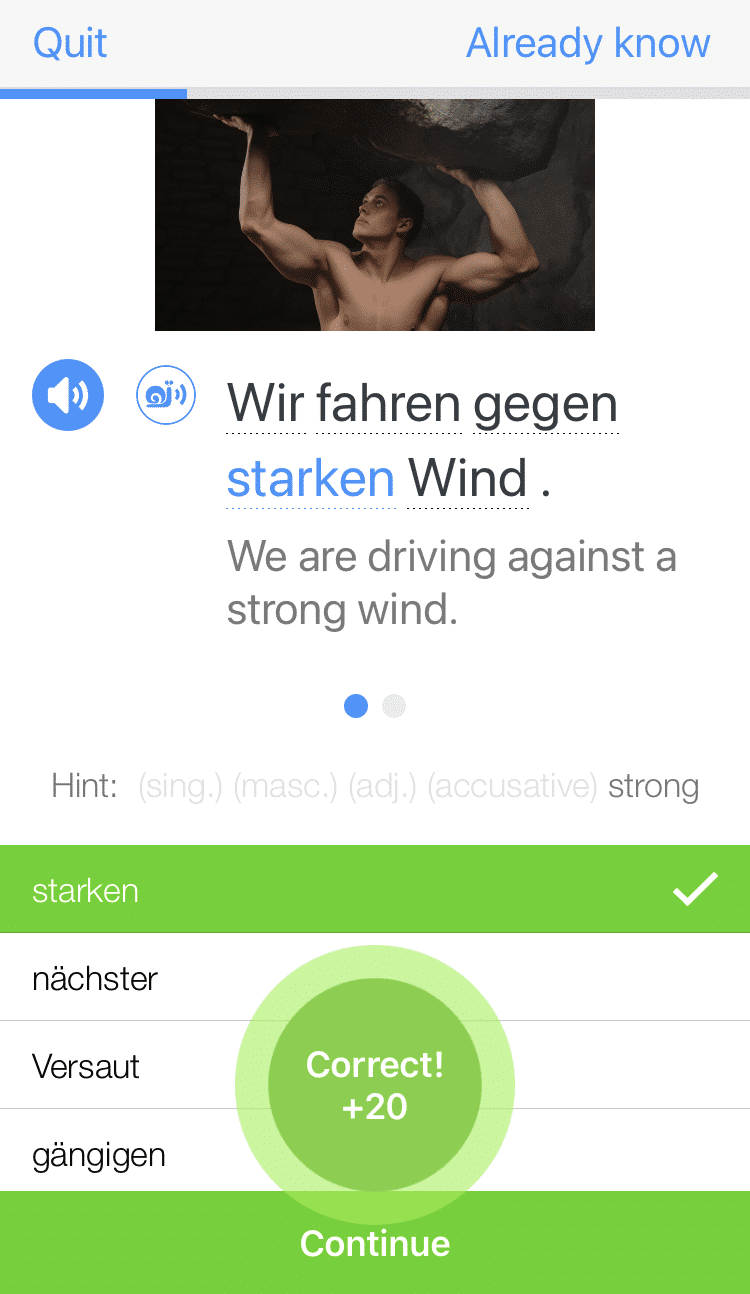
To keep things fresh, FluentU keeps track of the words you’re learning and recommends further lessons and videos based on what you've already studied.
This way, you have a truly personalized learning experience.
Start using the FluentU website on your computer or tablet or, better yet, download the FluentU app from the iTunes or Google Play store. Click here to take advantage of our current sale! (Expires at the end of this month.)
It can be hard even for native speakers to understand other native speakers with different accents.
However, the important thing is that you don’t let myths surrounding different German dialects dissuade you from learning.
Ideally, you’ll also let go of the idea that any of these dialects are inferior or wrong. Everyone speaks differently, period. Even if you only study the standard for a number of years, you may find yourself beginning to understand these dialects too!
Es lebe die Vielfalt! Long live diversity!
Download: This blog post is available as a convenient and portable PDF that you can take anywhere. Click here to get a copy. (Download)

